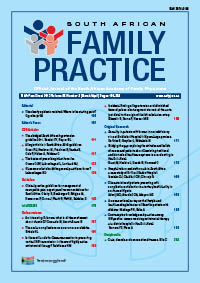Is there still a role for Caesarean section in preventing vertical HIV transmission in the era of highly active antiretroviral therapy?
Keywords:
CESAREAN SECTION / HIV / HAART
Abstract
Human immunodeficiency virus (HIV) may be transmitted from an infected mother to her child during pregnancy, delivery or breastfeeding. Without any intervention, transmission rates may range from 15-45%. However, this can be reduced to < 5% with effective drug therapy. A scheduled Caesarean section that is performed before the onset of labour or the rupture of membranes has been shown to reduce the intrapartum risk in a meta-analysis of earlier studies. The review further concluded that the benefit of performing an elective Caesarean section outweighed the risk of postpartum morbidity in HIV-infected women. However, balancing the risk to benefit ratio is influenced by the underlying rate of mother-to-child transmission (MTCT) in an individual patient. Caesarean section, while initially shown to reduce the MTCT risk, is itself associated with significant morbidity to the mother. Pregnancy-related sepsis is among the leading causes of maternal deaths, particularly in women who deliver by Caesarean section.
Published
2012-08-06
Section
Review Articles
By submitting manuscripts to SAFP, authors of original articles are assigning copyright to the South African Academy of Family Physicians. Copyright of review articles are assigned to the Publisher, Medpharm Publications (Pty) Ltd, unless otherwise specified. Authors may use their own work after publication without written permission, provided they acknowledge the original source. Individuals and academic institutions may freely copy and distribute articles published in SAFP for educational and research purposes without obtaining permission.

